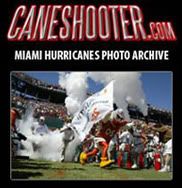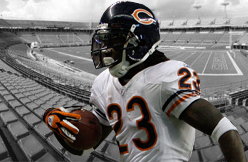Watching Devin Hester run past defenders in mini-camp this week made it easy to forget that his move to full-time wide receiver last season clearly was a failure if viewed within the context of a one-year vacuum.
Unless, that is, your idea of success is finishing 49th in the NFL in receiving yards and not having a single 100-yard receiving game.
The Bears clearly are counting on Hester progressing this season. That is not an unreasonable expectation, given his inexperience and ability.
But how much better will he be?
The thinking behind putting Hester at wide receiver full time was to get the ball in his hands more often. That barely happened. He had 120 touches in 2008, only seven more than the previous year, when he was primarily a return man.
His inexperience at receiver hurt his progress. According to STATS, Hester was thrown to 91 times but caught only 56 percent of those passes. By comparison, Carolina’s Steve Smith, the player with whom Hester often is compared, caught 60.5 percent of the passes thrown to him.
What Hester can give a team is rare big-play capability. That was diminished, however, as he returned fewer kicks.
In 2008 on offense and special teams combined, Hester had 15 plays of 25 yards or more. The year before, despite having fewer touches and despite opponents making a more concerted effort to prevent him from returning the ball, he had 22 big plays of 25 yards-plus.
When he was primarily a returner in 2007, 19.4 percent of his touches went for big plays. When he was primarily a receiver last year, 12.5 percent of his touches were big plays.
The quality of his big plays was better the year before too. He averaged 46.9 yards on his plays of 25 yards or more in 2007, compared with 33.6 yards on them last year.
Ultimately, this is what it is all about—two years ago Hester put the Bears in position to score more points than he did last year.
They scored 76 points in 2007 either with his big plays or on the ensuing drives and only 45 last year.
When Hester had a big play in 2007, points were the result 54 percent of the time, compared with 46 percent last season.
For all the offensive snaps he had in 2008, he had only five more big plays as a wide receiver—seven total—than he did the year before. But he had seven fewer as a punt returner and five fewer as a kickoff returner.
Hester, obviously, was not as effective as a return man when he was a full-time wide receiver.
Consequently, the Bears were more dynamic when his principal duties were on special teams.
The Bears won’t reduce his role on offense now, in part because they don’t have any other wide receivers who could take his place in the lineup.
Moreover, they already have bet too much on this hand to fold at this point. There still is a chance that they can win the hand—and win big.
Former NFL quarterback Ron Jaworski, who probably watches more game tape than any current NFL quarterback in his job as host of ESPN’s “NFL Matchup,” has studied Hester’s transition. And he is thinking like Bears coach Lovie Smith.
“He has improved dramatically as a wide receiver,” Jaworski said. “He has improved in every area, … I thought he learned how to run routes, he learned how to read coverages on the move and he learned now to stem and separate from cornerbacks and safeties.
“I saw a guy who got better and better and better the more experience he got. I think he is going to make a significant contribution as a wide receiver.”
The Bears need for Jaworski to be right.
But if Hester does not improve rapidly and dramatically on offense in 2009, going back to special teams would be the best return he ever could make.
(chicagotribune.com)


